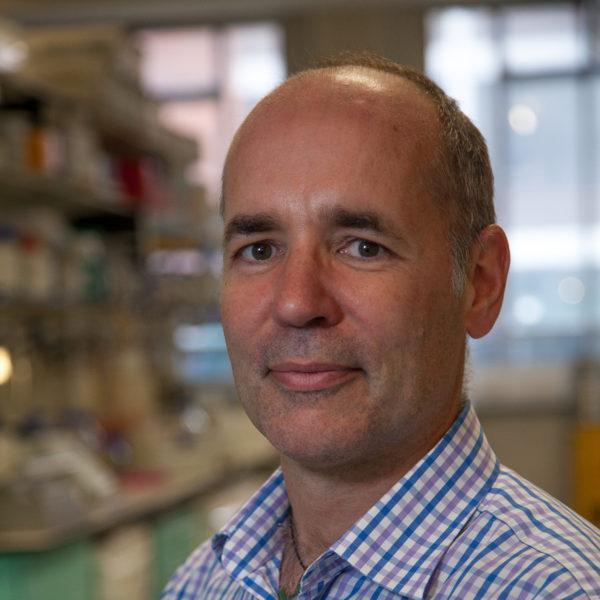
Professor Richard Grose
BSc, PhD
Professor of Cancer Cell Biology
Deputy Centre Lead, Group Leader
TwitterResearch Focus
We are interested in how cancer cells interact with each other and the microenvironment. We investigate how cancer cell communication with neighbouring stromal cells and the extracellular matrix can impact on invasion and response to targeted therapies, to try to block cancer progression, with a particular focus on breast and pancreatic cancer.
Key Publications
Nuclear FGFR1 promotes pancreatic stellate cell-driven invasion through up-regulation of Neuregulin 1. Oncogene (2022). https://doi.org/10.1038/s41388-022-02513-5
FGF signalling facilitates cervical cancer progression. FEBS J (2021) 289(12):3440-3456. PMID: 34951738
PHLDA1 mediates drug resistance in receptor tyrosine kinase driven cancer. Cell Reports (2018) 22:1-13. PMID: 29490281
Pancreatic cancer cell invasion is mediated by nuclear translocation of FGFR1 and FGF2 in stellate cells. EMBO Mol Med (2014) 6:467-481. PMID: 24503018
FGFR1 cleavage and nuclear translocation regulates breast cancer cell behavior. Journal of Cell Biology. (2012) 197(6):801-17. PMID: 22665522
Major Funding
- 2019-2023- Cancer Research UK, Myoepithelial degradome in the progression of DCIS to invasive breast cancer, £473,002
- 2019-2023- Barts Charity, Exploring the role of adenosine axis in the tumour microenvironment of pancreatic cancer, £104,971
- 2021-2022- Barts Charity, Deconvoluting cellular crosstalk in pancreatic cancer invasion, £49,511
- 2018-2022- Breast Cancer Now, Myoepithelial/luminal cross-talk in the progression of DCIS to invasive breast cancer, £201,816
Other Activities
- Dean for Global Engagement, Faculty of Medicine & Dentistry, Queen Mary University of London
- Honorary Professor - Wenzhou University, China
- Breast Cancer Now grants committee
- Irish Cancer Society - Grants Review Panel Member
- National Science Centre, Poland - Expert Panel Member
- Commonwealth Scholarship Commission - Academic Adviser Panel
- British Association for Cancer Research executive committee
- Barts Pancreas Tissue Bank – Chair of Tissue Access Committee
Research
Receptor Tyrosine Kinase (RTK) signalling can be a positive driving force for cell proliferation, survival and migration but it is kept under tight control via feedback loops. In cancer, these controls can be bypassed by a variety of mechanisms and we are investigating how this happens.
We focus on breast and pancreatic cancer, using 2-D and 3-D cell-based models to investigate how cellular behaviour changes when cell signalling is altered. We collaborate with clinical colleagues to determine the translational significance of our findings through analysis of patient samples.
Our current research aims:
- Modelling breast cancer development in 3D culture
3D modelling fulfils a critical role in research, allowing for complex cell behaviour and interactions to be studied in physiomimetic conditions. We have used the Breast Cancer Now Tissue Bank, an invaluable resource of primary cells isolated directly from patients, to interrogate the interactions between myoepithelial and luminal cells in 3D using collagen gels. Using lentiviral transduction of isolated cells, we have developed a model that allows us to study early events in breast cancer development, to help understand how breast cancer progresses, with the ultimate aim of improving early diagnosis and treatment.
We have a number of projects investigating protease dependent activities, proteomic approaches to understanding cross-talk, impact of the innate immune system and RTK crosstalk with cannabinoid receptors.
- Understanding the molecular basis of pancreatic cancer invasion
Using advanced 3D cell based models we have identified a number of exciting new pathways implicated in stromal-led invasion in pancreatic cancer. We are investigating protease dependent activities, RTK-mediated pathways and purinergic signalling to identify novel biomarkers of disease progression and new targets for therapeutic intervention.
- Targeting FGFR-mediated cellular crosstalk in cancer
Fibroblast Growth Factor Receptor (FGFR) mutations are key drivers in a number of cancers, where dependency on oncogenic FGFR signalling makes FGFRs attractive targets for targeted therapies. We have worked extensively on endometrial, cervical breast and pancreatic cancer models, showing FGF signalling to play a critical role in cell migration and survival.
We have discovered that, rather than signalling from the cell surface or within endosomes, FGFRs can be proteolytically cleaved following activation and that the cytoplasmic portion of the receptor can traffic to the nucleus and regulate gene transcription. We have identified this behaviour in invasive breast cancer cells both in vitro and in vivo. We have shown that nuclear FGFR signalling is a critical mediator of cancer-stroma cross-talk in pancreatic cancer, and we are exploring the therapeutic potential of FGFR inhibition in blocking pancreatic cancer progression.
For more information, please visit www.groselab.com
Other Activities
- Dean for Global Engagement, Faculty of Medicine & Dentistry, Queen Mary University of London
- Honorary Professor - Wenzhou University, China
- Breast Cancer Now grants committee
- Irish Cancer Society - Grants Review Panel Member
- National Science Centre, Poland - Expert Panel Member
- Commonwealth Scholarship Commission - Academic Adviser Panel
- British Association for Cancer Research executive committee
- Barts Pancreas Tissue Bank – Chair of Tissue Access Committee
Major Funding
- 2019-2023- Cancer Research UK, Myoepithelial degradome in the progression of DCIS to invasive breast cancer, £473,002
- 2019-2023- Barts Charity, Exploring the role of adenosine axis in the tumour microenvironment of pancreatic cancer, £104,971
- 2021-2022- Barts Charity, Deconvoluting cellular crosstalk in pancreatic cancer invasion, £49,511
- 2018-2022- Breast Cancer Now, Myoepithelial/luminal cross-talk in the progression of DCIS to invasive breast cancer, £201,816
- 2009-2010- Medical Research Council, Tumour suppressive function of Fgfr2b, £343,676.00
Recent Publications
TGFβ-mediated MMP13 secretion drives myoepithelial cell dependent breast cancer progression Gibson SV, Tomas Bort E, Rodríguez-Fernández L et al. npj Breast Cancer (2023) 9(7)
ADAMTS3 restricts cancer invasion in models of early breast cancer progression through enhanced fibronectin degradation Gibson SV, Madzharova E, Tan AC et al. Matrix Biology (2023) 121(7) 74-89
The Future of Precision Oncology Rulten SL, Grose RP, Gatz SA et al. International Journal of Molecular Sciences (2023) 24(7)
Hallmarks of cancer-the new testamen Senga SS, Grose RP (2023) (7) 1239-1279
Opposing roles for ADAMTS2 and ADAMTS14 in myofibroblast differentiation and function Carter E, Yoneten K, Gavara N et al. Pancreatology (2023) 23(10) e13-e14
Targeting FGFR signalling as a therapeutic approach in pancreatic ductal adenocarcinoma Wang Q, Grose R Pancreatology (2023) 23(10) e12
Targeting pancreatic cancer: preclinical work Marshall J, Grose R Pancreatology (2023) 23(10) e5-e6
Everybody needs good neighbours: the progressive DCIS microenvironment Gibson SV, Roozitalab RM, Allen MD et al. Trends in Cancer (2023) 9(7) 326-338
HDAC Inhibition Restores Response to HER2-Targeted Therapy in Breast Cancer via PHLDA1 Induction Clayton NS, Carter EP, Fearon AE et al. International Journal of Molecular Sciences (2023) 24(7)
Correction: Nuclear FGFR1 promotes pancreatic stellate cell-driven invasion through up-regulation of Neuregulin 1 (Oncogene, (2023), 42, 7, (491-500), 10.1038/s41388-022-02513-5) Coetzee AS, Carter EP, Rodríguez-Fernández L et al. Oncogene (2023) 42(7) 545
For additional publications, please click hereTeam
Postdoctoral Researchers
- Dr Edward Carter
- Dr Lucía Rodríguez Fernández
- Dr Kubra Yoneten
PhD Students
- Shayin Gibson
- Elena Tomas Bort
- Reza Roozitalab
- Nick Roth
- Qiaoying Wang
- Akil Gani
Biography
- 1990-91: Research assistant at Amersham. Developing ELISAs for HIV testing
- 1991-94: BSc in Zoology (University of Bristol)
- 1994-95: Research Associate at Pfizer Central Research. Molecular Sciences Department
- 1995-99: PhD (University College London). Molecular basis of embryonic wound repair (Prof Paul Martin)
- 1999-2001: Postdoctoral researcher (ETH Zurich). Genetically modified mouse models of wound healing (Prof Sabine Werner)
- 2001-2004: Postdoctoral Fellow (CR-UK LRI). FGF signalling in cancer (Dr Clive Dickson)
- 2004-present: Group leader at Barts Cancer Institute
